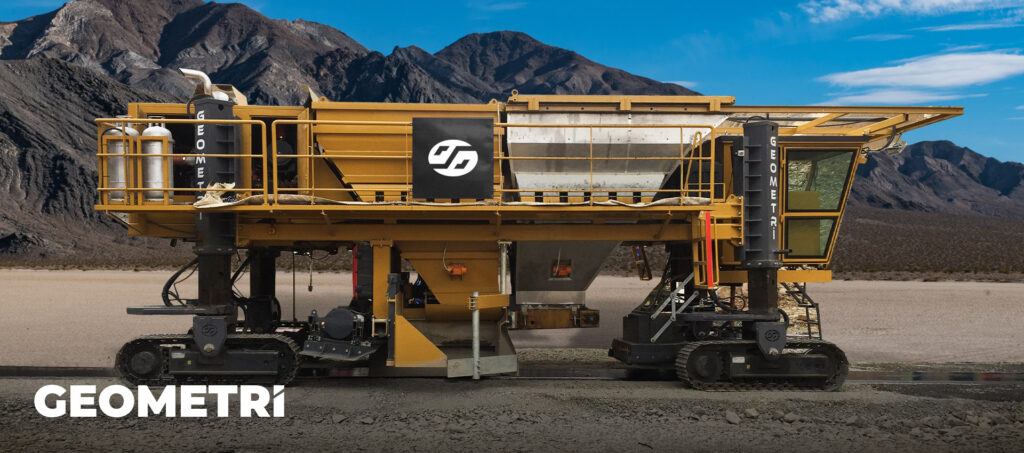Concrete Vibrators

Concrete vibrators are one of the mechanical tools that work on suitable ground with vibration. These machines used in industrial areas have many different models and brands. Thanks to the machine, the concrete is placed in the molds in such a way that there are no gaps. It fulfills its functions by the vibrations it produces. It has a very important place in the construction industry due to the benefits it provides in concrete casting.
After the concrete is poured, many bubbles form inside the mold. These bubbles are sent out by the concrete vibrator. With the vibration and shaking provided by the machine, the bubbles are eliminated. As the bubbles disappear, the concrete is placed firmly. It is recommended to use the machine after concrete is poured.
Vibrators have different usage areas. There are different types depending on the usage area. For this reason, it is recommended to do research before purchasing the machine.
Features of Concrete Vibrator
Concrete vibrators are one of the important tools used in industrial and construction areas. The most common usage area is concrete floors in construction. The main feature of the machine is to compact the poured concrete. The density of the concrete is increased by the compaction process. It produces a high amount of adherence on cold jointed surfaces. Increases durability.
It creates a high level of strong adherence to the steel in the structure. Even if the mixtures are dry, they can be processed thanks to the concrete vibrator. It is resistant to high amount of pressure. It achieves homogeneity in concrete. Many other features vary according to the brand of the machine and the area of use. Among the most commonly used models are gasoline and electric vibrators.
Concrete Vibrator Types
Types of concrete vibrators have a fairly wide catalog. Vibrators used in construction; It varies according to interior, exterior, surface and concrete type. When choosing a machine, the process and method are generally taken into account. Vibrators are in different categories as gasoline and electric. Concrete vibrator types are as follows:
• Table,
• Hand carry,
• Mold and outer surface,
• Self-converter,
• Shoulder type.
The type used in construction sites is the type of vibrator called needle or plunger. It is used at the stage of placing the concrete in the mold. This device, which produces high-frequency vibration, includes power part, hose and head. Mold and external surface vibrators are mounted outside the mold. It undertakes the task of compressing the concrete over the formwork. As the vibrator works on the die, most of the energy is wasted. For this reason, it is generally used in areas where an internal vibrator is not practical.
Concrete Vibrator Usage
The usage patterns of concrete vibrators vary according to their types. Each model has its own unique way of working. While the concrete is wet, the vibrator is started. Thanks to the vibration, it is aimed to eliminate the bubbles in the concrete. When the process is completed, the concrete takes its solid form. During casting, experts recommend regular and continuous use of the vibration machine.
In the realm of construction, precision and durability are paramount. Whether you’re working on a small DIY project or a large-scale construction site, ensuring the integrity of your concrete is essential. That’s where concrete vibrators come into play. In this comprehensive guide, we’ll delve into the world of concrete vibrators, exploring their types, uses, and best practices to achieve optimal results in your projects.
What are Concrete Vibrators?
Concrete vibrators are indispensable tools used to consolidate freshly poured concrete, removing trapped air bubbles and ensuring uniformity and strength throughout the structure. They work by rapidly vibrating the concrete mixture, allowing it to settle and compact efficiently. This process enhances the concrete’s density and eliminates voids, resulting in a smooth, durable finish.
Types of Concrete Vibrators:
Internal Vibrators:
Also known as immersion or needle vibrators.
Consist of a vibrating head connected to a flexible shaft.
Ideal for consolidating concrete in confined spaces or intricate forms.
Available in various sizes and power sources, including electric, pneumatic, and gasoline.
External Vibrators:
Also referred to as surface vibrators.
Attached to the concrete formwork or surface.
Suitable for consolidating large pours or flat surfaces such as slabs, pavements, and walls.
Offered in electric or pneumatic models, providing high-frequency vibrations for effective consolidation.
Form Vibrators:
Designed to attach directly to the formwork.
Facilitate consolidation of concrete in vertical applications, such as walls or columns.
Offer versatility and ease of use, contributing to efficient construction practices.
Table Vibrators:
Utilized for casting concrete products like precast panels, blocks, or tiles.
Consist of vibrating tables that impart high-frequency vibrations to the molds, ensuring proper compaction and finish.
Uses of Concrete Vibrators:
Foundation Construction: Ensures proper compaction and strength of concrete footings and foundations.
Slab Pouring: Eliminates air voids and ensures uniformity in large concrete slab installations.
Vertical Structures: Facilitates consolidation of concrete in walls, columns, and other vertical applications.
Precast Manufacturing: Vital for producing high-quality precast concrete products with consistent density and finish.
Best Practices for Using Concrete Vibrators
Proper Placement: Position the vibrator systematically to cover the entire concrete area, ensuring uniform consolidation.
Duration of Vibration: Follow manufacturer recommendations for the appropriate duration of vibration based on concrete mix and thickness.
Avoid Over-Vibration: Excessive vibration can lead to segregation or weakening of concrete. Use caution to avoid over-consolidation.
Regular Maintenance: Keep vibrators clean and well-maintained to ensure optimal performance and longevity.
Safety Measures: Wear appropriate personal protective equipment (PPE) such as gloves, goggles, and hearing protection when operating concrete vibrators.
Concrete vibrators play a crucial role in achieving high-quality, durable concrete structures. Understanding the different types, applications, and best practices for using these tools is essential for successful construction projects. By incorporating concrete vibrators into your workflow and adhering to recommended practices, you can ensure the integrity and longevity of your concrete structures.